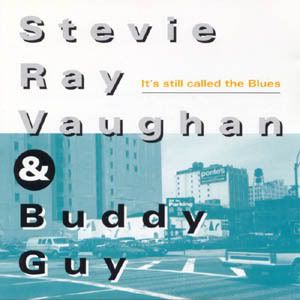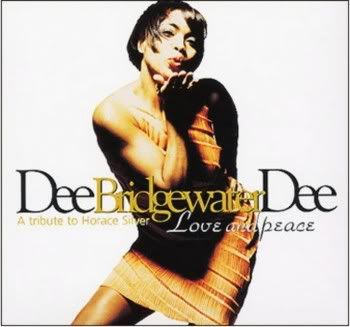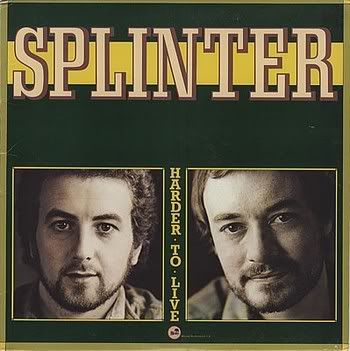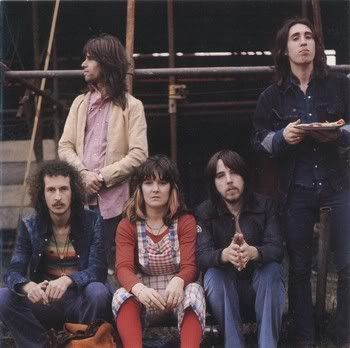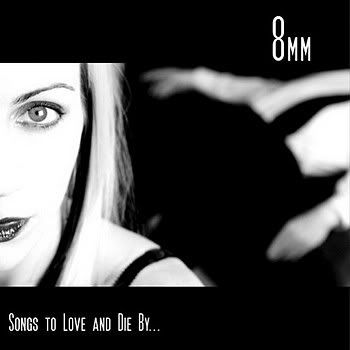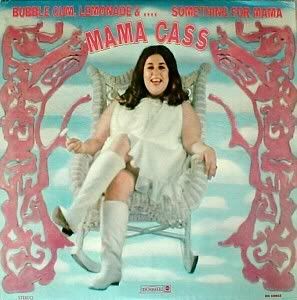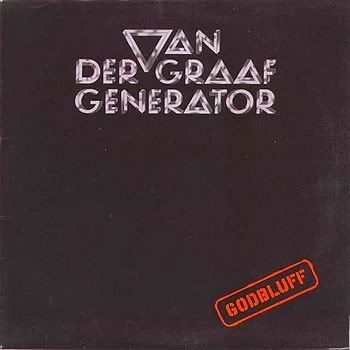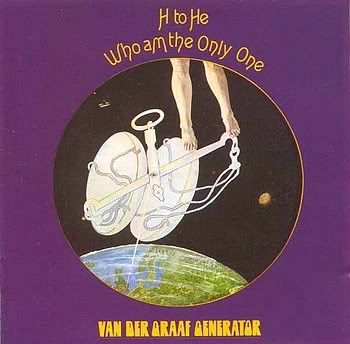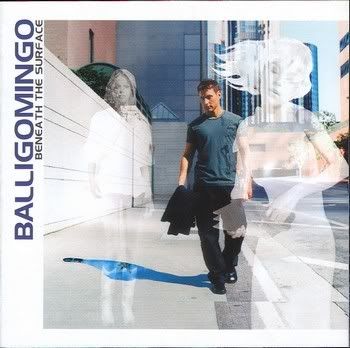
Balligomingo - Beneath the Surface - 2002 - Windham Hill Records
Good mix of electronic, acoustic, and orchestral sounds, Beneath The Surface features a guest appearance (on "Heat") by Kristy Thirsk, lead singer of Delerium and the Juno Award-winning ensemble Rose Chronicles. If you are not into ethereal electronic vocal sounds, then this album is probably not for you. Nevertheless, it,s a much better album than most in this genre. It is very well produced, has some great rhapsodic vocals, and if you just want to relax or chill out, it's well worth listening to.
TRACKS
1. Purify (Jody Quine)
2. Escape (Colleen Coadic)
3. Falling (Beverly Staunton)
4. Sweet Allure (Jennifer Hershman)
5. Wild Butterfly (Jennifer Baldwin)
6. Beyond (Beverly Staunton)
7. Privilege (Jody Quine)
8. Heat (Kristy Thirsk)
9. Lost (Camille Miller)
10. Marooned (Beverly Staunton)
11. Lust (Beverly Staunton)
12.Being (Colleen Coadic) - Hidden track)
PERSONNEL
Kristy Thirsk
Jennifer Baldwin
Jody Quine
Beverley Staunton - vocals
Camille Miller
Colleen Coadic
Jennifer Hershman
Garrett Schwartz; Vic Levak - Producers
Vic Levak - Engineer
REVIEWS
Fans of the celestial sounds of Enya and the lush trip-hop beats of Delerium and Enigma will love Balligomingo. Contrary to its Eastern-sounding name, Balligomingo is the baby of one Garrett Schwartz, a keyboardist-programmer who collaborated with a variety of musicians for Beneath The Surface. Though purely a U.S. and Canadian affair, the music does create an ethereal air of mystery and tension not unlike that of Asian underground pioneer Nitin Sawhney's recent Prophesy (though Balligomingo is far less profound). The buoyant, atmospheric tracks of Surface include various female vocalists who extend the songs' allure, a live band treated to sound like sweet computer rhythms, and a 15-piece orchestra. Most of the songs flow together, sustaining the album's dream sequence mood like a long summer rain. Occasionally, the vocals border on teen-pop, but mostly they blend into the foreground, helping to advance Balligomingo's lush world-beat-and-tone poetry muse. © Ken Micallef, © 1996-2007, Amazon.com, Inc. or its affiliates
Aural nectar ... sonic ambrosia ... how to best describe the new full-length release--Beneath the Surface (BMG (USA) 01934-11606-2, 2002) from Balligomingo--auditory nirvana ... celestial soundwaves?
Whatever words fans ultimately select, it is likely that all will agree that this long-awaited full-length debut release by Balligomingo sets a new benchmark in the genre of electro-pop music. It may even be fair to say that, in terms of sheer listenability, Balligomingo's Beneath the Surface surpasses Delerium's more recent efforts.
Without question, vocalists Jody Quine, Colleen Coadic, Beverley Staunton, Jennifer Hershman, Jennifer Baldwin, Kristy Thirsk, and Camille Miller have elevated Beneath the Surface to a higher plane by contributing some of the most lush and rhapsodic singing ever recorded. This album is simply a "must have" for any fan of female vocal-based music.
Part of the joy in listening to Beneath the Surface stems from the superb sonic aspects of the recording. Each of the instrumental and vocal parts blend uniformly while retaining their own distinct character. This has much to do with the skill of the mix-engineer, Greg Reely, who has masterfully mixed this album to enhance every auditive element. Our track-by-track review of Beneath the Surface lists both title and vocalist for each song for the benefit of our readers.
"Purify" - Jody Quine: Balligomingo wisely chose this most radio-friendly song to open the album. Recalling the production and texturing of a William Orbit (who produced Madonna’s "Ray of Light") number, "Purify" is the embodiment of melodic, ethereal electronica. Importantly, Jody's assertive and effortless vocals keep the song well-grounded and accessible. Listeners are hooked from the outset by this hopeful melody.
"Escape" - Colleen Coadic: Slightly slower and more measured than "Purify," "Escape" takes full advantage of Colleen’s haunting, plaintive voice. In fact, one almost senses an element of danger in the way that Colleen stretches the lyrics over the beat. The mesmerizing percussion and pumping bass-synth provide a few perfectly chilled-out moments on this journey.
"Falling" - Beverley Staunton: This languorous and heavenly piece marks one of several high points on the album. Fans of Balligomingo may notice that this album version differs slightly from the promotional version. Beverley's voice has been mixed so as to allow listeners to more fully appreciate her sublime and passionate vocal phrasings. In addition, newly layered orchestration has replaced the synth-strings featured on the original version. Finally, a beautiful piano track has been incorporated, punctuating the harmonic line. This is rare and lovely music-making at its finest. Simply incredible!
"Sweet Allure" - Jennifer Hershman: If Suzanne Vega and Delerium could be sonically merged, the end result might be something closely akin to the sounds found in the song, "Sweet Allure." Featuring folksy acoustic guitars and a riveting percussion line, "Sweet Allure" presents another unique foray into Balligomingo’s world. Jennifer’s unique style of signing also helps set this song apart from other tracks on the album. We especially like use of the tribal, timpani-like percussion during the intro.
"Wild Butterfly" - Jennifer Baldwin: Evoking images of beautiful seascapes, meadows, and flowing water, "Wild Butterfly" is a transporting interlude. An arresting piano track propels the melody, which is accompanied by Jennifer’s exquisite voice. This is that rare song that makes the listener feel as though he or she were in flight enjoying a vast panoramic view of the earth below.
"Beyond" - Beverley Staunton: "Beyond" is a luxurious, ambient track that makes the most of Beverley’s aching vocals. If fans are seeking the sounds of warm summer nights and pulsating ocean waves, this is the song for them.
"Privilege - Jody Quine: Hands down, this reviewer's favorite track on the album, "Privilege" opens with an inspired and majestic string arrangement reminiscent of The Verve's widely played "Bittersweet Symphony." This noble introduction quickly merges into a sensual melange of mid-tempo percussion, light piano accompaniment, and blended synths. Most impressive is Jody Quine's penetrating vocals--this reviewer can hardly recall hearing a voice so elegant and controlled. The lyrics to "Privilege" also make this track especially enjoyable. Certainly gets the vote for most likely to be a "hit."
"Heat" - Kristy Thirsk: Kristy Thirsk has long been recognized as on of Canada's most talented female vocalists. After listening to the mechanistic "Heat," it is obvious that such recognition is highly deserved. In her trademark way, Kristy purrs, croons and takes control in this highly seductive foray into sensory pleasure. The grinding rhythm and Kristy's recurring angelic keening are darkly compelling. Mysterious but beckoning, "Heat" is sure to beguile both Balligomingo and Kristy Thirsk fans alike.
"Lost" - Camille Miller: "Lost" provides another subtle shift in the listener's journey. Much of the credit here can be given to Camille’s dense and commanding voice. Crossing into Dead Can Dance territory, "Lost" is the most "ethnic" styled song on Beneath the Surface--and it works perfectly. Glimpses of Persia and the Orient appear through use of guitar and dulcimer. Enchanting throughout.
"Marooned" - Beverley Staunton: Esoteric and elusive, "Marooned" categorically succeeds as one of the outstanding tracks on the album. The gentle and melancholic reverbed B-Tribe-esque guitar picking backed by Beverley's masterful vocals are incomparable. This newly mixed version includes additional lyrics and some surprises including the subtle modulation of Beverley's voice at the 0:40 second mark and the wonderfully epic bass-strings introduced at the 2:07 mark in the song. "Marooned" will certainly appeal to fans of Enya, B-Tribe, and early Sarah McLachlan.
"Lust" - Beverley Staunton: "Lust" illuminates Balligomingo's more industrial, darkwave qualities. Again, Beverley Staunton provides vocals, enlivening the music with her gripping performance. More ominous, "Lust" is nevertheless a clever shift in the album’s tone.
Bonus Track - "Being" - Colleen Coadic: Attentive fans will note the hidden track, "Being," at approximately 6:13 into track 11. And a pleasant surprise it is. Leaning towards a sound closer to Vanessa Daou, Morcheeba, or Zero 7, "Being" actually incorporates the chorus from "Escape," providing a nice tie-back to the beginning of the album. One is instantly impressed by Balligomingo's ability to move in a somewhat different direction musically (this time, a more trip-hop/downtempo vein) while maintaining continuity. A genuinely satisfying song that demonstrates Balligomingo’s earthier side, "Being" is a fabulous conclusion to a fabulous recording.
One of the finest albums released in recent memory,Garrett Schwarz, Vic Levak, the contributing vocalists, and all others involved in the realization of Beneath the Surface deserve the highest praise for creating such an exquisite release. Thank goodness that RCA saw the wisdom in signing Balligomingo to its label. We, the fans, are the fortunate recipients of such foresight. More, please! © Justin Elswick, © www.musicaldiscoveries.com/reviews/balligomingo.htm
With a record as polished as Beneath the Surface, it's difficult to fathom that producer Garrett Schwarz had no musical training before helming Balligomingo in 1999. He did get a lot of help: seven female vocalists (including Kristy Thirsk of Delerium and Camille Miller, among others), guitarist Vic Levak, string arranger Graeme Coleman, drummer James Kaufmann, programmer Jerry Wong, and the Mark Ferris Orchestra. Regardless, Beneath the Surface is a gorgeous combination of dazzling electronics, beautiful vocals, and stunning worldbeat sounds. Each vocalist is nearly indistinguishable, but that's hardly a bad thing. Their voices soar high above the atmospheric programming, bringing with them strong emotions and lyrical imagery. Opening track "Purify" is immediately breathtaking, the apt accompaniment for soaring through the clouds and diving into clear blue oceans. Beneath the Surface was designed to take your mind to an exotica land and find deeper meaning within yourself. This impressive debut delivers on that concept. © Kenyon Hopkin, © 2007 All Media Guide, LLC. All Rights Reserved
ABOUT BALLYGOMINGO
Garrett Schwarz was working as a business consultant for IBM when he'd finally had enough. He was no longer interested in corporate business, since the repetitive routine wasn't creative enough for this musician in the making. He had a hidden agenda and Balligomingo was it.
Schwarz grew up in the Chicago suburb of Romeoville, later moving to Minneapolis during his senior year of high school. He was already fond of the electronic sounds of Jean Michel Jarre and Pink Floyd thanks to his father's interests. Still, music wasn't a tangible idea, let alone a sensible career move. He graduated from Arizona State University with a business degree, later earning additional graduate credits in business. Having a typical nine-to-five job in Los Angeles was secure for awhile, but Schwarz wasn't satisfied. He was too enthralled by the musical beauty of Enya, Massive Attack, Sunscreem, and mesmerized by the intensity of Nine Inch Nails and the Prodigy. By the late '90s, he threw caution to the wind and began making music on his computer. After talking with Delerium's Kristy Thirsk, he left for Vancouver, BC, to work with programmer Vic Levak. There, the exotic sounds of Balligomingo were born.
In 1999, Schwarz scored a deal with RCA Victor. He, Levak, and Delerium's Bill Leeb and Chris Peterson honed Balligomingo's atmospheric instrumentals for the next year.
Seven female vocalists from the U.S. and Canada were also brought in to capture Balligomingo's artistic expression and emotion. He made his first introduction with "Lost" being included on the ambient techno compilation Elevation, Vol. 3, while "Heat" appeared on Under Water, Vol. 1. Balligomingo's lush soundscapes were finally spooled into a daydream trip for a debut album. In June 2002, Beneath the Surface was released worldwide. © MacKenzie Wilson, © 2007 All Media Guide, LLC. All Rights Reserved
BIO (Wikipedia)
Balligomingo is an electronic music project by Garrett Schwarz and Vic Levak. Their music has been compared to that of Delerium (the lead vocalist, Kristy Thirsk, sings in a few of their songs), Massive Attack, Nitin Sawhney and Enigma.



